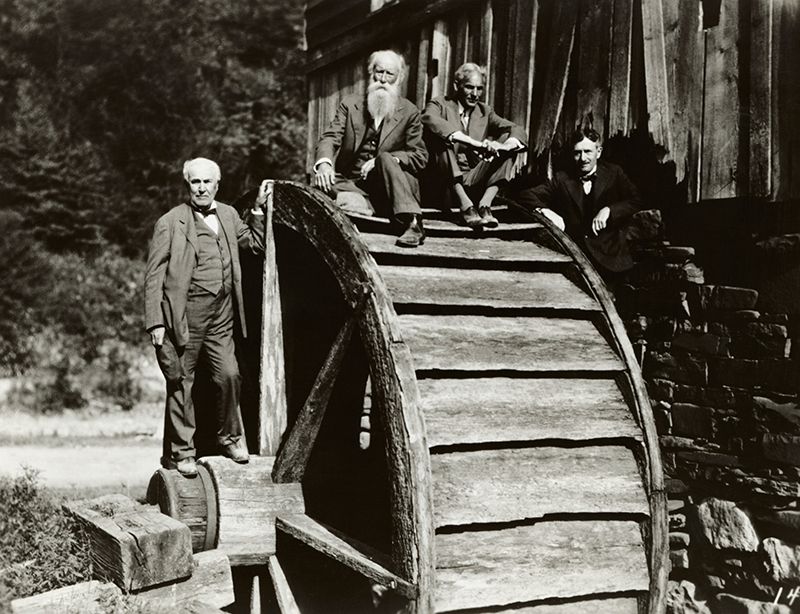
In the mid-summer of 1918, Harvey Firestone wrote to Thomas Edison that he and Henry Ford wanted to take a camping trip and the inventor made it clear that he was eager to go. Ford’s staff set up the equipment brought from Dearborn, Michigan and his personal chef cooked. He also provided comfy, luxury cars for the Vagabonds to ride in, Model Ts for staff, tents, and other camp gear such as chairs and tables. Edison’s storage batteries provided power to light the tents at night.
Edison brought his friend, R.J.H. DeLoach, a professor at the University of Georgia whose research in the cotton industry caught the inventor’s attention. Ford also invited a guest, Edward H. Hurley – chairman of the Federal Trade Commission and the wartime Shipping Board, which Ford also served on. Everyone met in Pittsburgh, where there were enough sufficient quality roads to ensure a good start south.
After leaving Pittsburgh, they made it only about 15 miles before it got dark, driving southeast. They stopped at a roadside grove a few miles outside of Greensburg and enjoyed a delicious supper, according to Firestone’s journal about the trip. Everyone gathered by the campfire for hours of uninterrupted conversation. Since their commissary truck that carried the food needed repairs along the way, they stayed at the Summit Hotel, situated up a mountain whose crest offered a panoramic view in all directions. Several rooms were available and hotel staff served the group a meal after their arrival. Firestone was looking forward to relaxing in a nice space; however, Ford wanted to hike to the very top of the mountain with the automobile magnate. He recalled, “of course, I wanted to be congenial, and said, ‘certainly, I will join you in anything.’ ”
They continued to Horseshoe Run River in West Virginia, where Burroughs and Ford spotted a rare bird, identified by the naturalist in his journal as a “painted bunting.” Some logging crews in the area came to the camp to visit the Vagabonds and they offered them cigars. According to Ford, “they proved to be the most congenial and hospitable people we had met.” They shared information about their work and offered to return later to show the travelers the engine and logging train they used to haul loads from the forest to the sawmill. As they further traveled south, there were some adventures along the way, such as when Ford spotted a farmer “cradling” or harvesting oats in his field. He jumped out of his car, helped the farmer, then insisted Firestone try it. The task did not come easy to him, and Burroughs described him as having “doubtful success … the process was not so easy as it looked.”
The next phase of the trip crossed into Tennessee, from where they proceeded to North Carolina, then back through Virginia. Burroughs and Professor DeLoach decided to head back to New York, and Ford, Firestone, and Edison and went to Hickory. When they got near Winston-Salem, a group of officials announced they would lead the Vagabonds into town. Edison and Ford agreed to attend a luncheon in their honor and made visits to local businesses, including a factory where Camel cigarettes were packed and rolled. He entertained the press by comparing the Camel process to manufacturing small tanks and boat destroyers at his company plants. Before leaving, Ford took a loose sample of tobacco for Edison.
The remainder of the trip was spent sightseeing and the Firestones took a tour of the “Natural Bridge, the Cave, the Lost River and other points of interest.” Edison, worn down by two weeks of travel, chose to stay in the car. After ending the trip in Hagerstown, everyone returned home.
See Also
Keely
Keely Chronology
Edison
Edison and Keely
Firestone-Edison-Ford
Henry Ford
THOMAS EDISON
